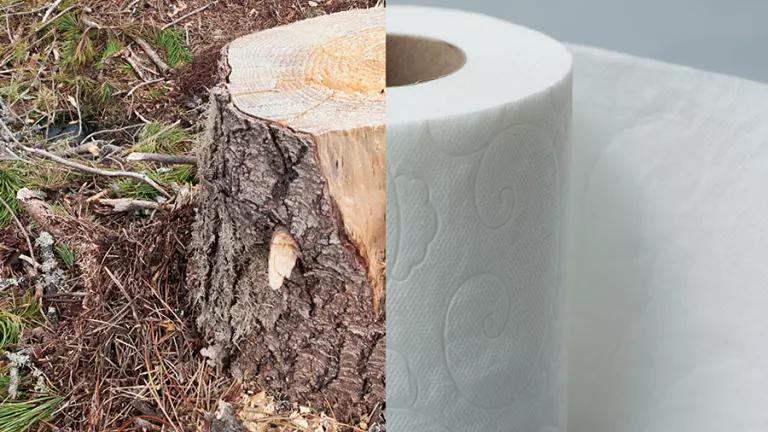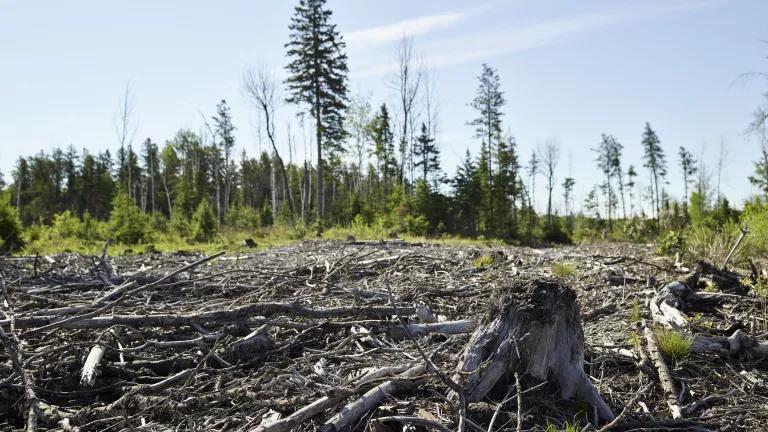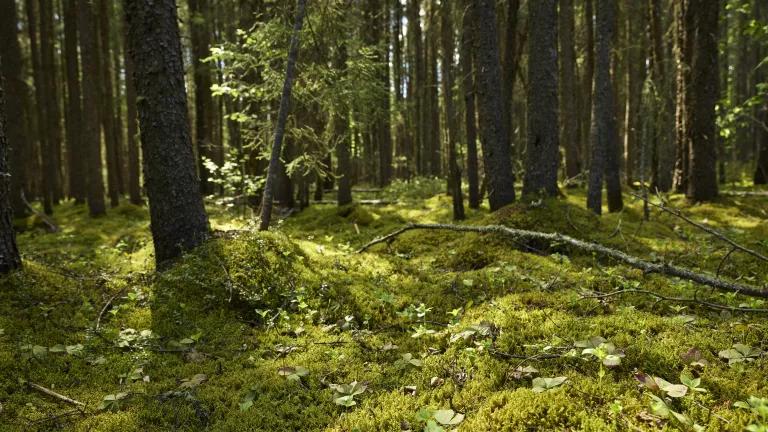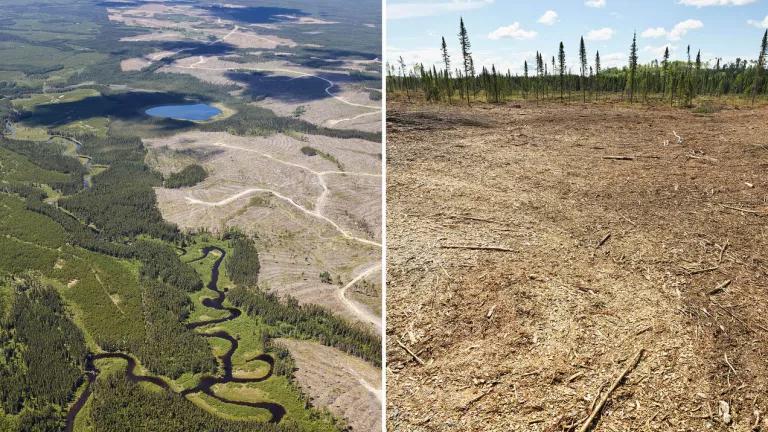Missing the Forest for the Toilet Paper

How P&G’s Climate Commitments Belie the Carbon Toll of Its Toilet Paper
The loss of the world’s remaining intact forests is devastating our efforts to avoid cataclysmic climate change. Yet Procter & Gamble (P&G), whose tissue products take an outsized toll on these intact forests, is ignoring this dynamic.
At first glance, P&G has a robust greenhouse gas emissions reduction commitment that aims to reduce the company’s annual emissions 50% by 2030. But in truth, this goal has glaring omissions, failing to address any of the substantial emissions from P&G’s sourcing and production of its raw materials—like tissue pulp—and use and disposal of products, including Charmin (P&G’s flagship toilet paper brand). Procter & Gamble’s reliance on virgin forest fiber is felt particularly acutely in the Canadian boreal forest, companies like P&G drive more than one million acres of logging each year.
As my colleague Josh Axelrod notes, if P&G broadened the scope of its emissions reduction goals to include these emissions, its total reported climate footprint would grow from 4.3 million metric tons to nearly 215 million metric tons—and likely even more—meaning that P&G’s 50% reduction goal would, in fact, reduce its carbon footprint by just 1%.
As NRDC and Stand.earth wrote in our new report, one way for P&G to make a dent in this colossal emissions total would be to follow the lead of other, more sustainable tissue companies and increase the amount of recycled content in its tissue brands, like Charmin toilet paper.
Right now, no P&G tissue brand includes any recycled content. Their reliance on virgin forest pulp is terrible for some of the world’s most important forests, like the Canadian boreal, and is estimated to generate 17.8 million metric tons of greenhouse gas emissions each year, or the rough equivalent of 3.8 million cars. [1]
If P&G increased the recycled content in Charmin and its other brands by even 50%, the company could lower its annual emissions by 6.2 million metric tons.[2] It would also do a great deal to ensure important forests like the Canadian boreal remain intact.
P&G has a major role to play in the fight against climate change, and in saving the world’s remaining intact forests. As a global leader, they need to fully recognize the impacts their products have on the world and accept responsibility for finding a solution. It’s time for them to make sure their commitments translate to the major changes that are needed to avoid climate change’s worst impacts and keep our forests healthy and intact.
[1] Using Paper Calculator 4.0, this number was derived by inputting 1.5 million metric tons of virgin pulp for use in “Tissue” into the calculator. Calculator results are presented in pounds, which have been converted to metric tons here.
[2] Using Paper Calculator 4.0, this number was derived by inputting 1.5 million metric tons of virgin pulp for use in “Tissue” and comparing this to 1.5 million metric tons of 50% recycled pulp into the calculator. Calculator results are presented in pounds, which have been converted to metric tons here.




